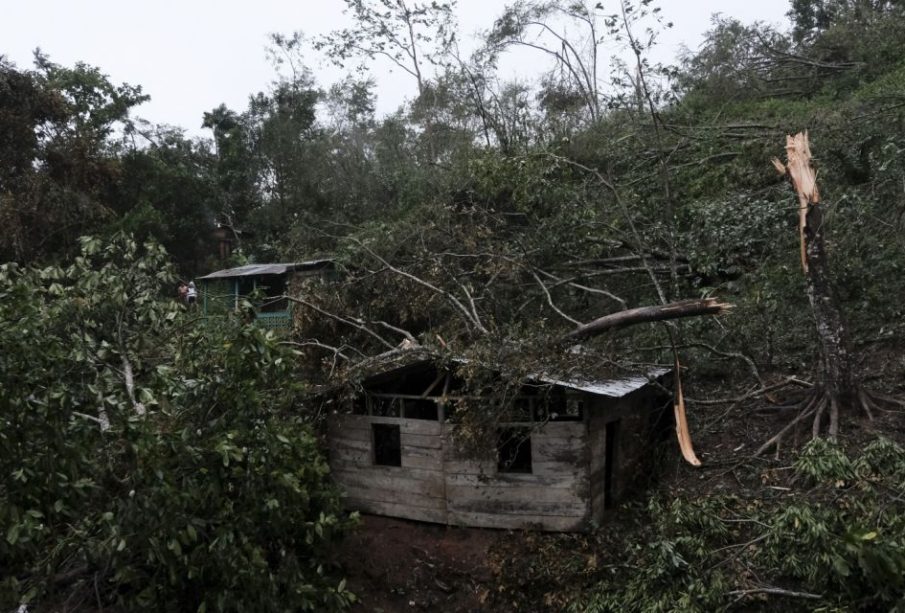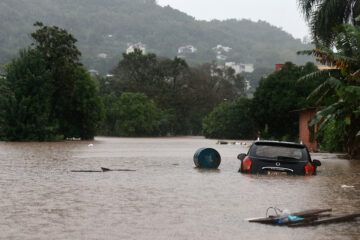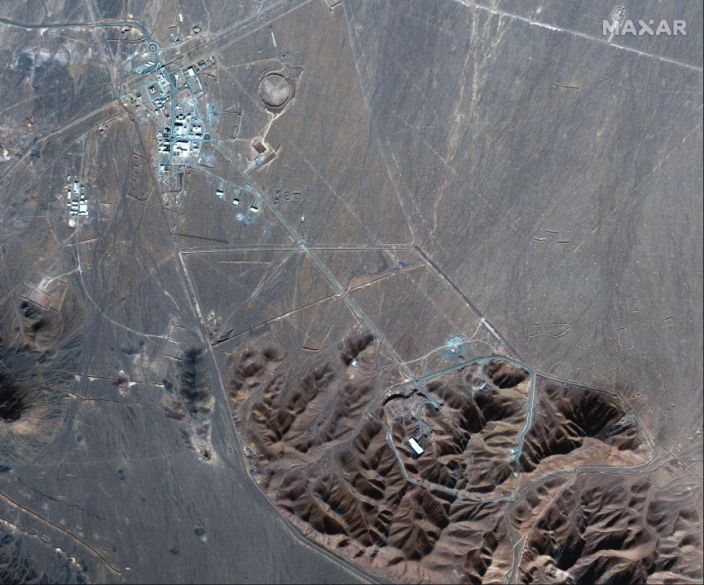Hurricane Iota bashes Nicaragua, Honduras after Eta floods
 Fallen tree branches cover a house after the passage of Hurricane Iota in Siuna, Nicaragua, Tuesday, Nov. 17, 2020. Hurricane Iota tore across Nicaragua, hours after roaring ashore as a Category 4 storm along almost exactly the same stretch of the Caribbean coast that was recently devastated by an equally powerful hurricane. (AP Photo/Carlos Herrera)
Fallen tree branches cover a house after the passage of Hurricane Iota in Siuna, Nicaragua, Tuesday, Nov. 17, 2020. Hurricane Iota tore across Nicaragua, hours after roaring ashore as a Category 4 storm along almost exactly the same stretch of the Caribbean coast that was recently devastated by an equally powerful hurricane. (AP Photo/Carlos Herrera)Hurricane Iota battered Nicaragua’s Caribbean coast and flooded some stretches of neighboring Honduras that were still under water from Hurricane Eta two weeks earlier, leaving authorities struggling to assess damage after communications were knocked out in some areas.
By late Tuesday, Iota had diminished to a tropical storm and was moving inland over northern Nicaragua and southern Honduras, but forecasters warned that its heavy rains still posed a threat of flooding and mudslides. It had maximum sustained winds of 40 mph (65 kph) and was spinning westward at 12 mph (19 kph).
The storm passed about 25 miles (40 kilometers) south-southwest of Tegucigalpa, the capital of Honduras, where rivers were rising and rain was expected to intensify. In mountainous Tegucigalpa, residents of low-lying, flood-prone areas were being evacuated in anticipation of Iota’s rains, as were residents of hillside neighborhoods vulnerable to landslides.
Along Honduras’ remote eastern coast, people had to leave damaged and flooding homes.
“What affected us most here was the flooding. The Barra Patuca sector has been flooded for the last two weeks,” said Teonela Paisano Wood, mayor of the Honduran town of Brus Laguna. “We are in danger if it keeps raining.”
Mirna Wood, vice president of the Miskito ethnic group in Honduras’ far east Gracias a Dios region, was in Tegucigalpa collecting donations for her community ravaged by Eta when Iota hit.
Some 40,000 people in the area had moved to shelters from low-lying land beside rivers and the sea, but other people remained stranded near the border with Nicaragua. Some were rescued by Nicaraguan authorities, she said.
In her last communication with the mayor of the community of Villeda Morales late Monday, he told her Iota was hitting them hard and the community had not completely evacuated.
“We are facing an incredible emergency,” Wood said. “There is no food. There is no water.”
In Nicaragua where the storm hit Monday night as a Category 4 hurricane, the extent of the damage was unclear because much of the affected region was without electricity as well as phone and internet service, and strong winds hampered radio transmissions. Iota made landfall just 15 miles (25 kilometers) south of where Hurricane Eta hit on Nov. 3, also as a Category 4 storm.
Preliminary reports from the coast included toppled trees and electric poles and roofs stripped from homes and businesses, said Guillermo González, director of Nicaragua’s emergency management agency. More than 40,000 people were in shelters.
Later, Nicaraguan Vice President and first lady Rosario Murillo said that a brother and sister, ages 11 and 8, had drowned in the community of La Pinuela trying to cross the swollen Solera River. There were reports of others missing in the same area.
Panama reported that one person was killed and another missing in its western Indigenous autonomous Ngabe Bugle area near the border with Costa Rica.
Aid agencies struggled to reach their local contacts, and the government said in a statement that at least 35 towns in the east and north had no phone service. Nicaragua’s telecommunications ministry said phone and broadband provider Columbus Networks was offline because of flooding in the coastal city of Puerto Cabezas, also known as Bilwi.
Eta caused more than 130 deaths as it triggered flash floods and mudslides in parts of Central America and Mexico. It left tens of thousands homeless in Honduras, which reported 74 deaths and nearly 57,000 people in shelters, mostly in the north.
Even before Iota hit Nicaragua, it scraped over the tiny Colombian island of Providencia, more than 155 miles (250 kilometers) off Nicaragua’s coast. Colombian President Ivan Duque said one person was killed and 98% of the island’s infrastructure was “affected.”
Providencia is inhabited almost exclusively by the descendants of African slaves and British colonizers, who speak an English version of Creole as their native language. The island has no direct flights to the mainland, but it has become an increasingly popular tourist destination thanks to its quiet beaches and rich marine life. On Tuesday, Colombian officials said they were sending a ship with 15 tons of aid to the island.
Iota is the record 30th named storm of this year’s historically busy Atlantic hurricane season. It’s also the ninth storm to rapidly intensify this season, a dangerous phenomenon that is happening more often.
Iota also developed later in the season than any other Category 5 storm on record, beating a Nov. 8, 1932, Cuba hurricane, said Colorado State University hurricane researcher Phil Klotzbach.
The hurricane season officially ends Nov. 30.
___
Associated Press










